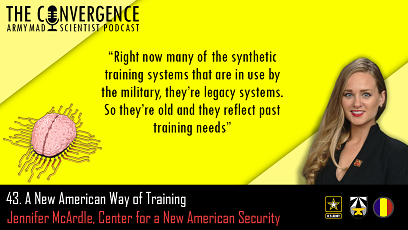[Editor’s Note: Army Mad Scientist is pleased to feature our latest episode of The Convergence podcast, with Jennifer McArdle, Product Strategist at Improbable and Adjunct Senior Fellow at the Center for a New American Security, discussing the future of the Synthetic Training Environment, flexibility and scalability in training systems, and the critical need for a new agile approach to training that can keep pace with the dynamic character of warfare — Enjoy! (Please note that this podcast and several of the embedded links below are best accessed via a non-DoD network due to network priorities for teleworking)]
[If the podcast dashboard is not rendering correctly for you, please click here to listen to the podcast.]
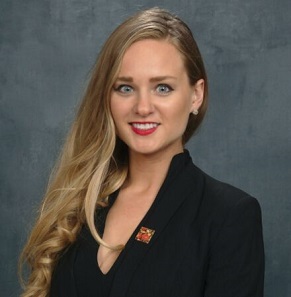 Jennifer McArdle is an Adjunct Senior Fellow with the Defense Program at the Center for a New American Security (CNAS) and a Product Strategist at Improbable LLC, an emerging global leader in distributed simulation technology for military planning, training, and decision support. Her research focuses on military innovation, readiness, and synthetic training. She currently serves as an expert member of a NATO technical working group that is developing cyber effects for the military alliance’s mission and campaign simulations. Her work has been featured in Real Clear World, The Cyber Defense Review, National Defense Magazine, and War on the Rocks, among others. Ms. McArdle previously served as an Assistant Professor of Cyber Defense at Salve Regina University, where she lectured on the relationship between national security and disruptive technologies.
Jennifer McArdle is an Adjunct Senior Fellow with the Defense Program at the Center for a New American Security (CNAS) and a Product Strategist at Improbable LLC, an emerging global leader in distributed simulation technology for military planning, training, and decision support. Her research focuses on military innovation, readiness, and synthetic training. She currently serves as an expert member of a NATO technical working group that is developing cyber effects for the military alliance’s mission and campaign simulations. Her work has been featured in Real Clear World, The Cyber Defense Review, National Defense Magazine, and War on the Rocks, among others. Ms. McArdle previously served as an Assistant Professor of Cyber Defense at Salve Regina University, where she lectured on the relationship between national security and disruptive technologies.
In our interview with Ms. McArdle, we discuss the future of the Synthetic Training Environment, flexibility and scalability in training systems, and the critical need for a new agile approach to training that can keep pace with the dynamic character of warfare. The following bullet points highlight key insights from our interview:
-
-
- Synthetic training will be instrumental in providing the next generation of Soldiers with the tools they need to succeed in a new era of warfare. The adoption of synthetic training and simulation will empower realistic individual and collective multi-echelon and multi-domain training and mission rehearsal, advanced wargaming, and enhanced decision-making.
-
-
-
 The New American Way of Training Initiative at CNAS examines how the military will be required to train and fight in the future, using the Cold War as a model. During the Cold War, intense tension and sporadic ‘hot’ proxy conflicts spurred a series of innovations that required radical changes to military training and organization. This new CNAS initiative will help ensure that our future individual and collective training programs meet the needs of our warfighters, today and in the future.
The New American Way of Training Initiative at CNAS examines how the military will be required to train and fight in the future, using the Cold War as a model. During the Cold War, intense tension and sporadic ‘hot’ proxy conflicts spurred a series of innovations that required radical changes to military training and organization. This new CNAS initiative will help ensure that our future individual and collective training programs meet the needs of our warfighters, today and in the future.
-
-
-
-
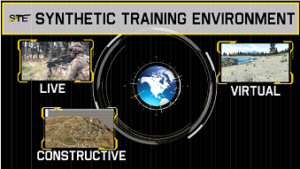
The Synthetic Training Environment (STE) is designed to provide a collective, multi-echelon training and mission rehearsal capability for the operational, institutional and self-development training domains / Source: U.S. Army Acquisition Support Center The DoD should focus on developing modular synthetic training architectures, enabling it to adapt training and simulations more readily as warfare evolves. This method differs from current synthetic simulators, which are monolithic in nature (i.e., large, complicated, and un-editable platforms). Modular training simulations will give future Soldiers ‘degradation dominance,’ or the ability to maintain high levels of performance under duress.
-
-
-
-
- The DoD should require modular components of training platforms in future acquisition contracts. Such contracts will also reduce cost for the DoD, as updating platforms will require less overhaul than monolithic platforms.
-
-
-
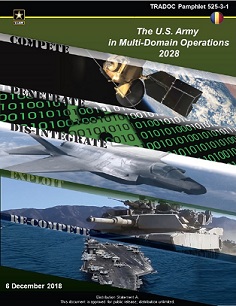 Synthetic training is particularly important for success in multi-domain operations. Due to safety and security concerns, the military does not incorporate live cyber elements in its training exercises. However, synthetic environments would enable Soldiers to experience the stress of such elements in a risk-free environment, better preparing them for the realities of multi-domain operations.
Synthetic training is particularly important for success in multi-domain operations. Due to safety and security concerns, the military does not incorporate live cyber elements in its training exercises. However, synthetic environments would enable Soldiers to experience the stress of such elements in a risk-free environment, better preparing them for the realities of multi-domain operations.
-
-
-
- Successfully prioritizing training support will require the DoD to dedicate itself to organizational change. Breaking down ‘knowledge silos’ and promoting the cross-pollination of ideas will ensure that the DoD is able to use its latent talent and fully exploit the benefits of breakthrough technologies.
-
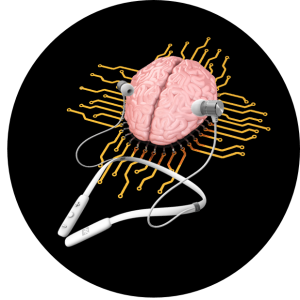
Stay tuned to the Mad Scientist Laboratory for our next episode of “The Convergence,” featuring our interview with Terry Young, Founder and CEO, sparks & honey — “a cultural intelligence consultancy helping organizations understand explosive and immediate cultural shifts, as well as cultural tastes that develop over time.” We will discuss the future of workplaces, the meaning of true diversity and how to achieve and measure it, and how to leverage AI and machine learning to build cultural intelligence across a wide spectrum of future topics on 14 October 2021!
If you enjoyed this post and podcast, check out the following related content:
From Legos to Modular Simulation Architectures: Enabling the Power of Future (War) Play, by Jennifer McArdle and Caitlin Dohrman
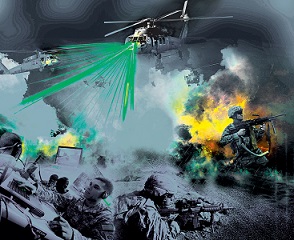 The Synthetic Training Environment [view via a non-DoD network], presented by then MG Maria Gervais, Director, STE Cross Functional Team (CFT) / Deputy Commanding General, Combined Arms Center-Training (DCG, CAC-T), from the Mad Scientist Installations of the Future Conference, co-sponsored by the Office of the Assistant Secretary of the Army for Installations, Energy and Environment (OASA (IE&E)) and the Georgia Tech Research Institute (GTRI) on 19-20 June 2018 in Atlanta, Georgia, and see her associated slide deck
The Synthetic Training Environment [view via a non-DoD network], presented by then MG Maria Gervais, Director, STE Cross Functional Team (CFT) / Deputy Commanding General, Combined Arms Center-Training (DCG, CAC-T), from the Mad Scientist Installations of the Future Conference, co-sponsored by the Office of the Assistant Secretary of the Army for Installations, Energy and Environment (OASA (IE&E)) and the Georgia Tech Research Institute (GTRI) on 19-20 June 2018 in Atlanta, Georgia, and see her associated slide deck
The STE discussion in the Top Ten Takeaways from the Installations of the Future Conference
The Metaverse: Blurring Reality and Digital Lives with Cathy Hackl and associated podcast
Gamers Building the Future Force and associated podcast
Fight Club Prepares Lt Col Maddie Novák for Cross-Dimension Manoeuvre, by LTC(P) Arnel David, U.S. Army, and Major Aaron Moore, British Army, along with their interview in The Convergence: UK Fight Club – Gaming the Future Army and associated podcast
The Convergence: The Future of Software with Major Rob Slaughter, then listen to the associated podcast
Disclaimer: The views expressed in this blog post do not necessarily reflect those of the Department of Defense, Department of the Army, Army Futures Command (AFC), or Training and Doctrine Command (TRADOC).

